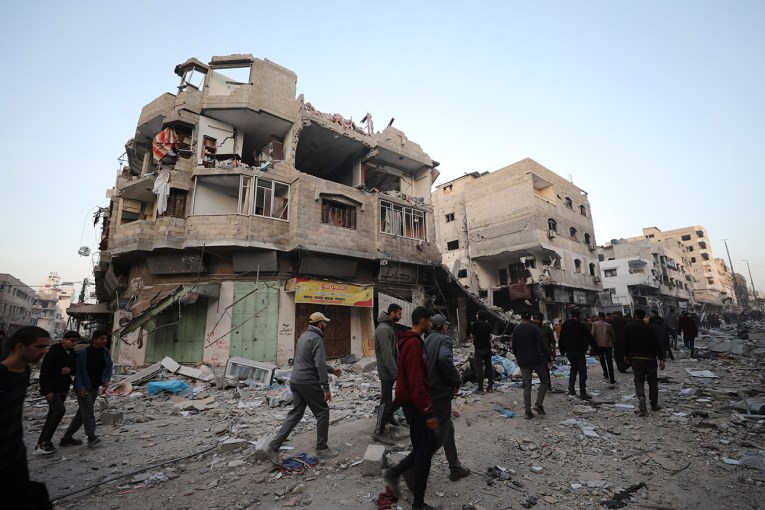Relatives split over raising Korean ferry
Four days after South Korea’s shattering ferry disaster, grieving relatives are split over whether to approve an end to the search for survivors and let cranes raise the vessel.
There are five giant floating cranes at the scene, but President Park Geun-hye gave her personal assurance to the families of those still missing that salvage operations would begin only after all hope of finding survivors was extinguished.
Nearly 60 people have been confirmed dead, but more than 240 are still unaccounted for – most of them children on an organised high school holiday.
A psychological turning point came when divers began retrieving bodies from inside the ferry on Sunday.
Many relatives had hoped passengers may have survived in trapped air pockets, and feared that raising the ship would have fatal consequences.
But others have begun to accept the probability there will be no survivors.
“I think the time may have come to use the large cranes,” said the father of one student, who gave his surname as Lee.
“It’s the practical option now, to prevent bodies being swept away by the currents and lost for good, or becoming too decomposed.”
Lee’s son was one of 352 students from Danwon High School on the ship.
Hundreds of distraught parents have been camping out in a gymnasium on the southern island of Jindo, near the disaster site.
“It has been four days. We need to do something,” said another father who took to the stage of the gym during a meeting with coastguard officials at the weekend.
“If there is no hope, then we should be able to hug our children while there’s still flesh on them and we can recognise their faces.”
Many family members have provided DNA samples to ease the process of identifying the bodies.
But officials remain wary of formally calling off the rescue part, for fear of further upsetting relatives incensed by what they saw as the slow and inefficient response to the ferry sinking.
When some relatives spoke during the meeting with the coastguard about bringing in the cranes, others shouted them down.
“It’s outrageous! What if even a single person remains alive in the ship?” Chung Hye-sook, the mother of a missing student told AFP, her face red with anger.
“Divers must go in and bring them out.”
Jang Chul-soon, 37, whose mother was among the missing, acknowledged the desire to recover the bodies before they became too disfigured.
“But not if lifting the ferry would deprive any survivor of their last chance of making it,” he said.
“We must not talk about the use of cranes.”
Grim search
The confirmed death toll from the disaster now stands at 36 with 266 people still unaccounted for.
More than 350 of those on board the 6825-tonne Sewol when it capsized and sank on Wednesday morning were students from the same high school in Ansan city just south of Seoul.
The age of the victims pulled from the ferry on Saturday night was not immediately known.
Their recovery followed days of fruitless efforts by more than 500 divers to access the submerged ship in the face of powerful currents and near-zero visibility.
Relatives of the missing gathered in the southern island of Jindo – not far from the disaster site – have been clinging to the slimmest of hopes that some may have survived in trapped air pockets.
On Saturday, investigators arrested the ferry’s captain, Lee Joon-Seok and two of his crew.
All three have been criticised for abandoning hundreds of passengers still trapped in the ferry, as they made their own escape.
Lee was charged with negligence and failing to secure the safety of passengers in violation of maritime law.
All three were paraded before TV cameras at their arraignment, dressed in dark raincoats with their hoods pulled up and their heads bowed.
Questioned as to why passengers had been ordered not to move for more than 40 minutes after the ship first foundered, Lee insisted it was a safety measure.
“At the time a rescue ship had not arrived. There were also no fishing boats or other ships around to help,” Lee said.
“The currents were very strong and the water was cold at that time in the area.
“I thought that passengers would be swept far away and fall into trouble if they evacuated thoughtlessly,” he added.
Experts have suggested many more people might have escaped if they had moved to reach evacuation points before the ship listed sharply and water started flooding in.
The relatives camped out in a gymnasium on Jindo island – most of them parents of high school students – have sharply criticised the pace of the rescue operation, accusing officials of incompetence and indifference.
Only 174 were rescued when the ferry sank and no new survivors have been found since Wednesday.
Initial questioning of the captain has focused on what actually caused the ferry to sink.
Tracking data from the Maritime Ministry showed the vessel made a sharp turn just before sending its first distress signal.
Some experts believe a tight turn could have dislodged the heavy cargo manifest – including more than 150 vehicles – and destabilised the vessel, causing it to list heavily and then capsize.
Captain Lee confirmed he was not at the helm when the ship ran into trouble.
The ship was being steered by a 55-year-old helmsman identified by his surname Jo, under the supervision of the female third officer.
“It may have partly been my fault,” Jo said at the arraignment.
“But the steering gear rotated unusually fast.”








